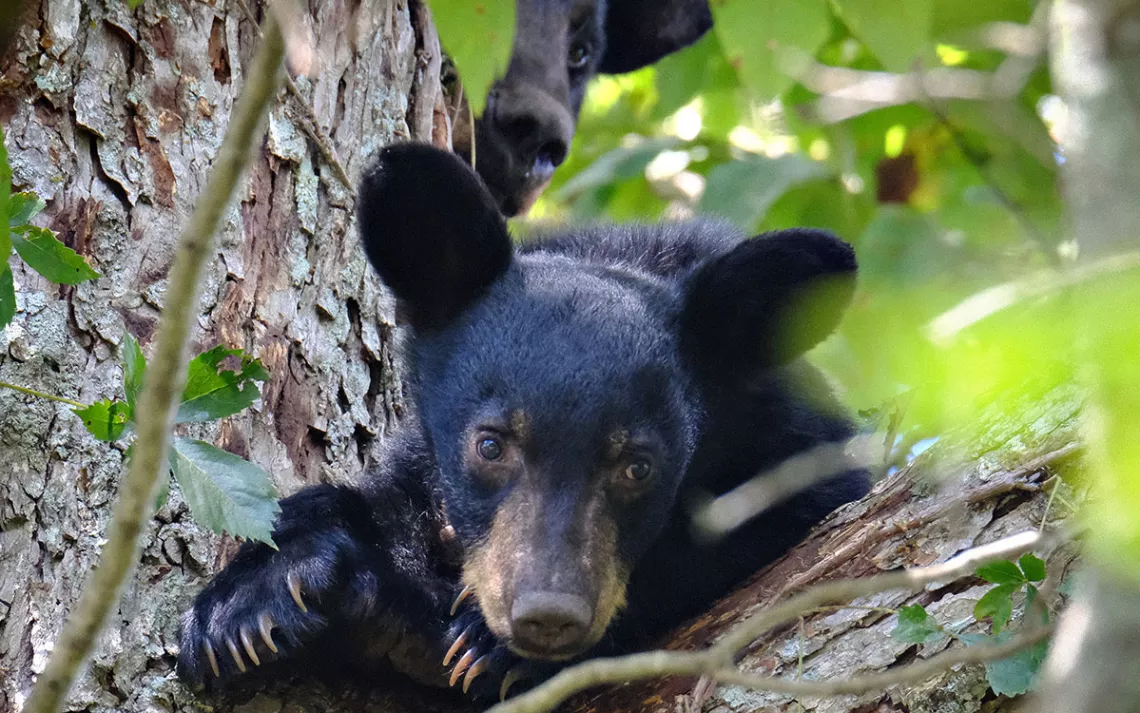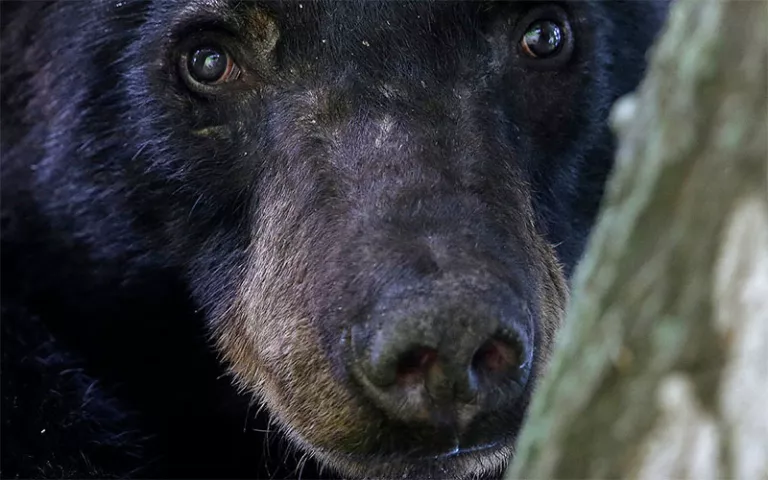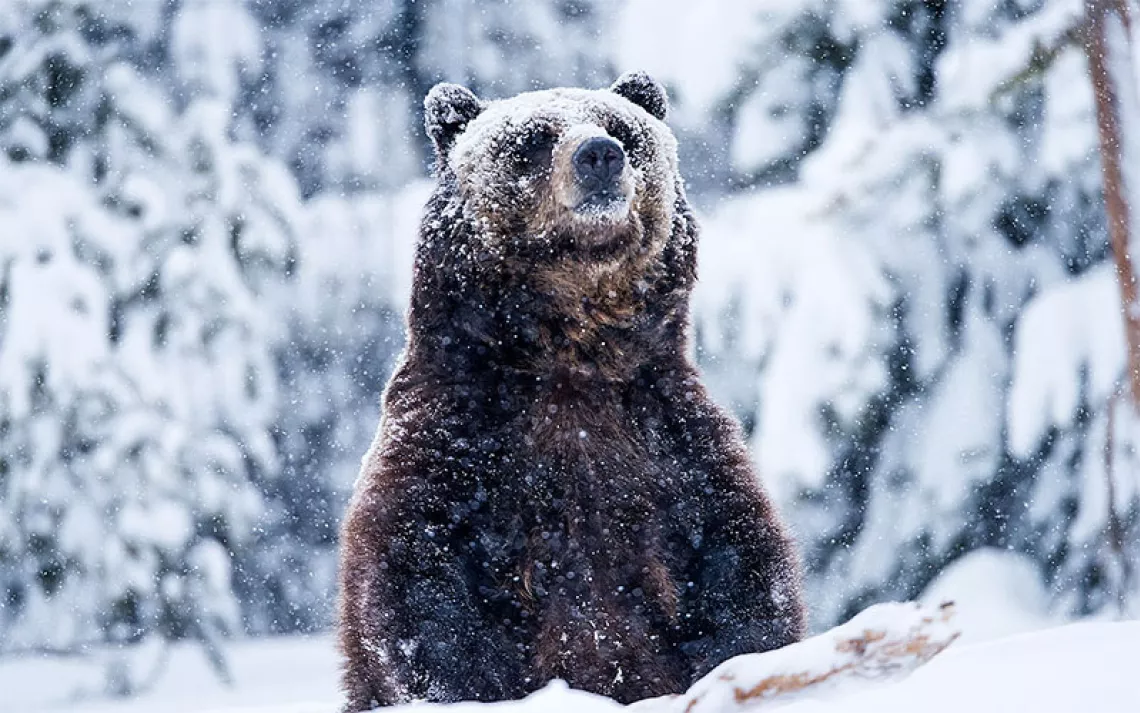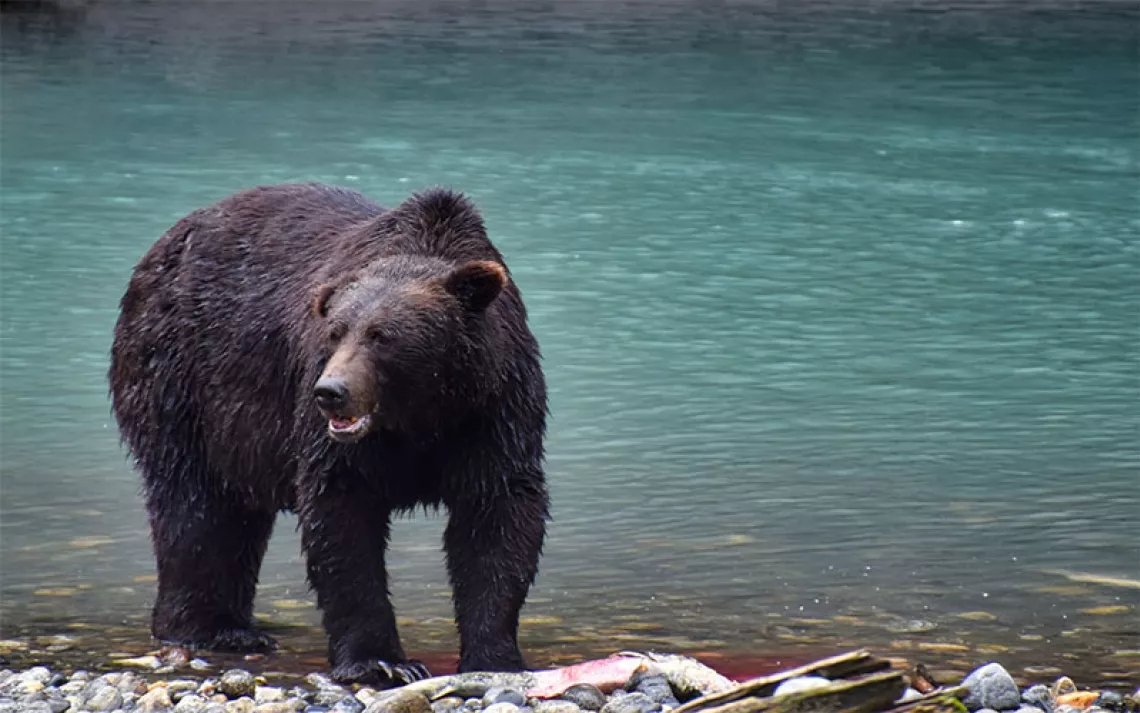A Planned Black Bear Hunt Could Destroy Nearly 40 Years of Conservation
Conservation groups and Louisiana leaders are at odds as the state wildlife agency seeks to revive black bear hunting

Photo by Candice Head
In the fall of 1902, the governor of Mississippi invited President Theodore Roosevelt on a bear hunt through the hardwood forests of the Mississippi River Delta. The hunt proved to be an unlucky one for the president. After four days without a kill, his assistants, led by former slave Holt Collier, decided to help things along by capturing a 235-pound Louisiana black bear and tying it to a tree. When President Roosevelt returned from lunch and saw the restrained bear, the usually eager sportsman refused to shoot. The owners of a candy shop in Brooklyn were so moved by a political cartoon depicting an indecisive Roosevelt and a pleading bear with oversized ears that they decided to create a new stuffed toy in the president’s honor: the Teddy Bear.
“I've hunted game all over America, and I'm proud to be a hunter,” the president was rumored to have said. “But I couldn’t be proud of myself if I shot an old, tired, worn-out bear that was tied to a tree."
The Louisiana black bear, which William Faulkner once described as “the epitome and apotheosis of the old wildlife,” has since become a beloved state symbol in Louisiana. It graces specialty license plates and is recognized as the state’s official mammal. One black bear advocate called the bear “a symbol of the South.” But a controversial new bill that allows the state wildlife agency to hold black bear hunts puts the fate of the iconic bear at risk.
A combination of severe habitat loss and overhunting nearly drove this subspecies of the American black bear to extinction. By 1987, the population had plummeted to as little as 80 to 120 individuals, according to some estimates. That same year, a Lafayette-based Cadillac dealer named Harold Schoeffler sued the federal government for its failure to protect the subspecies. In 1991, the federal government listed the bear as threatened under the Endangered Species Act, sparking decades of reforestation and relocation efforts that helped the struggling bear population bounce back. After the listing, more than 834,000 acres of bear habitat were protected and restored.
In 2016, the bear was pronounced recovered and delisted, a move many environmental groups opposed, with some outspoken advocates calling it perilous and premature. Since the delisting, Louisiana has seen repeated attempts to revive bear hunting. After a similar bill failed to become law in 2022, the Louisiana Department of Wildlife & Fisheries (LDWF) announced in April that it would once again seek to reinstate the practice. A petition opposing the hunt, which was circulated by the Louisiana Humane Society in January, received over 7,500 signatures. Despite the opposition, Governor Jeff Landry signed a bill into law in May, reopening a limited bear hunting season. The bill went into effect on August 1.
The state agency estimates that there are about 1,200 bears throughout the Mississippi Alluvial Valley and the Atchafalaya Basin, where rich soil and decent forest cover offer ideal habitat for the black bear. However, the true status of the Louisiana black bear is currently in dispute. While the LDWF maintains that the population is stable and growing, environmental groups contend that the latest monitoring data calls the long-term persistence of the black bear population into serious question.
“We are on the margins of what is needed genetically speaking for Louisiana black bears to survive in the long term,” Dean Wilson, the executive director of the Atchafalaya Basinkeeper, said. “This is not the time to do a black bear hunt.”
The Basinkeeper says the LDWF abundance estimates are misleading and subject to an uncomfortably wide margin of error. According to their numbers, the current black bear population is likely much closer to 500 to 750. They find the hunt especially worrisome because it permits hunters to shoot and kill female bears, though their cubs, defined as any bear that is 75 pounds or less, are still protected. LDWF agents monitor illegal hunting in the state, though advocates say most violations are left unenforced and uninvestigated. Based on some figures, the female survival rate over the past five years falls well below the threshold for long-term species survival.
The current Louisiana black bear population is heavily fragmented by highways, increasing agricultural, and residential development throughout the state. Without protected travel corridors between the subpopulations of black bears and a strong number of female bears to maintain genetic diversity, the Louisiana black bear population could further dwindle.
“If the LDWF really cares about hunting rights, they should be outraged that the bear population isn’t increasing and their habitat isn’t being protected,” Wilson said.

A Louisiana black bear, a subspecies of the black bear, in Marksville.| Photo by Gerald Herbert/AP File
When an animal is removed from the endangered species list, its critical habitat often disappears too. The Atchfalaya Basinkeeper says they have uncovered evidence of clearcutting in the region’s bottomland hardwood forests, including in key wildlife management areas where the remaining black bears currently roam. The Basinkeeper also alleges that the government is allowing landowners to build on land classified as environmental easements throughout crucial bear habitat. The LDWF contends that the harvest is a tool to keep the current bear population in check and prevent the mammals from encroaching into the state’s expanding cities.
"This is not hunting. It’s slaughter. Feeding donuts to bears to entice them into your property and then shooting them as a “nuisance” has been a standard practice for those wanting to kill bears when hunting was illegal," Margie Vicknair-Pray, the conservation projects coordinator at the Louisiana Chapter of the Sierra Club, said. "There’s nothing sportsmanlike about it."
The hunting season will run from December 7 to 22 in the limited area of the Tensas River Basin in northeastern Louisiana, a region rich with bottomland hardwoods, oxbow lakes, and wildlife refuges. The LDWF will issue 10 licenses by lottery and require hunters to take a training class before obtaining their tag. In addition to its 10-person lottery, the bill allows the LDWF to auction one hunting license to the highest bidder. Hunters are also permitted to use bear bait like bacon grease or pastries, a practice that is banned in many states and is thought to increase negative bear-human interactions.
Reopening the black bear hunt is part of a larger conservative push by the state’s new governor, Jeff Landry. Since taking office in 2024, Governor Landry, who once called climate change a hoax, has reorganized the state’s natural resources bureaucracy and stacked Louisiana’s environmental agencies with former oil executives and lobbyists. In 2023, Governor Landry appointed Madison Sheahan to run the LDWF. Sheahan, the 26-year-old former executive director of the South Dakota Republican party, has no prior conservation experience beyond being a proud hunter.
Though the current bear harvest is relatively limited in size and scope, environmentalists and other animal advocates worry that it is just the beginning of a larger crusade to expand bear hunting throughout the state. “They start very small so they don’t create an outcry, and then they slowly increase it to something more,” Wilson said.
Even with limitations in place, reviving the hunt after nearly 40 years could risk repeating the very past that drove the Louisiana black bear to the brink of extinction in the first place. Groups like the Atchafalaya Basinkeeper hope that the vulnerable Louisiana black bear can start garnering the level of national attention given to other endangered animals like the Mexican wolf and the Gulf of Mexico’s Rice’s whale. They worry that the same animal that inspired a beloved children’s toy may one day cease to exist.
“The decision to reopen a bear hunting season could spread across the country,” Wilson said. “But no one at the national level is fighting for the Louisiana black bear.”
 The Magazine of The Sierra Club
The Magazine of The Sierra Club



